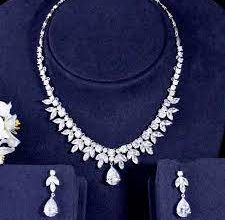The Environmental Impact of Silk Organza Fabric Production
Impact of Silk Organza Fabric Production

Silk organza fabrics are known for their beautiful ethereal appearance and extravagant feeling. This slender, lightweight fabric has been used in the world of fashion for many centuries. It is important to consider the fabric’s ecological footprint while we are exposed to environmental concerns. This blog will examine the environmental impacts of silk organza fabric. It will discuss both its advantages and drawbacks.
The Nature of Silk Organza Fabric
Let’s recall before getting into environmental impact, what silk organza actually is. This fine fabric is made out of silk fibres made by silkworms. It has a sleek texture and a transparent appearance. It is able to hold its shape. This makes it a popular choice for formal wedding gowns, wedding dresses, and other decorations.
The Silk Production Process
The process of producing silk organza fabrics begins by cultivating sericulture – the cultivation of silkworms. This method has been used for hundreds of years and has various phases:
Mulberry Cultivation: Silkworms feed exclusively on mulberry leaves, necessitating the cultivation of mulberry trees.
Silkworm Rearing: Silkworm eggs are hatched and are then fed with mulberry leaves till they’re ready to spin cocoons.
Cocoon Formation: The silkworms spin cocoons made of a single continuous silk filament.
Harvesting Cocoons: The cocoons are collected prior to the moth’s emergence typically through the heat.
Reeling :Silk filaments are removed from cocoons, and then rearranged to create silk thread.
Weaving :Silk threads are weaved into silk organza.
Environmental Considerations
Positive Aspects
Biodegradability: Silk organza fabric can be described as natural, protein-based fibre. Synthetic materials last in the environment for a long time but It gets biodegradable easily.
Renewable Resource: Silk is a renewable resource. Silkworms can breed endlessly without destroying natural resources.
Use of Low Chemical: Silk production requires less chemicals than synthetic.
Long-term durability: The silk’s durability ensures that garments last for a long time. This means less replacements, and also reduces environmental impact.
Areas of Concern
Water Use :Mulberry tree production along with silk fibre processing require plenty of water. In areas where water supply is scarce, this could affect the local resources.
Energy use: Large amount of energy is used at the time of weaving of silk.
Ethical Issues: Silk production traditionally involves the killing of silkworms inside their cocoons. It’s not a concern for the environment. But, it raises ethical questions. They could impact consumer choices and, in turn, manufacturing methods.
Pesticides: Certain mulberry farms make use of pesticides to safeguard their crops. It can be harmful to local ecosystems and biodiversity.
Transportation: The industry of textiles is globally oriented. Therefore, silk organza fabrics or the raw materials, are often transported over long distances. This results in carbon emissions.
Sustainable Innovations in Silk Production
As awareness of environmental concerns increases, the industry of silk is looking at sustainable ways of producing.
Peace Silk: The technique lets the moth emerge naturally from the cocoon before the silk is extracted. This creates a different appearance than traditional silk, it does address ethical issues and could attract eco-conscious buyers.
Organic Agriculture :Certain producers are adopting organic methods of cultivating mulberry, removing the application of synthetic pesticides as well as fertilisers.
Recycle Water: Modern silk production facilities have implemented water recycling systems in order to cut down on their water usage overall.
Energies Efficiency: Modern equipment for weaving and reeling will significantly cut down on energy use in the production of silk organza fabrics.
The Role of Consumers
The consumer plays a significant role in determining the impact on the environment of the production of silk organza fabric. Through informed decisions they can influence the practices of the industry:
Quality over Quantity :The investment in premium silk organza fabric which lasts longer will lower overall consumption and reduce waste.
Maintenance and Care :A proper care for silk organza fabric will prolong their life and reduce the requirement for replacement.
Promoting Sustainable Brands: Choose brands that promote sustainable and ethical production practices will bring positive change to the business.
Recycling and upcycling :The encouragement of upcycling and recycling of silk organza fabric could aid in reducing waste and prolonging the life of the fabric.
Conclusion
The manufacturing of silk organza fabric, as with other techniques for making textiles, has environmentally positive as well as negative consequences. Its biodegradability and renewable nature are notable advantages, however issues with water usage as well as energy consumption and ethical issues cannot be ignored.
As the industry grows with new methods of production, and a growing awareness of the consumer have opened the door to more sustainable organza silk fabric. When we understand the environmental impact of our choice of textiles we can make better informed choices and help to create sustainable fashion as well as the interior designing industry.
The success of this is in balancing its timeless appeal with sustainable production methods. When producers, consumers, and innovators collaborate in the hope of being able to appreciate this beautiful material while reducing the environmental impact.








